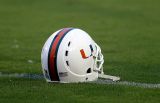A study involving the remains of 30 different dinosaur eggs suggests that the innovative style of building nests by the dinosaurs evolved into the nesting styles of modern birds, immortal reports.
"In the past, this lack of data has made working with dinosaur eggs and eggshells extremely difficult to determine how dinosaurs built their nests and how the eggs were incubated for hatching young", said the lead author of the study, Kohei Tanaka.
The study was published in the journal PLOS ONE.
"Nest structures are usually not preserved in the fossil record, making it difficult to determine if dinosaurs buried their eggs during incubation like crocodiles, or if they were incubated in more open nests as in brooding birds," Kohei Tanaka told FoxNews.com.
"There are many papers that seek the incubation method of dinosaurs, but our research is one of the most comprehensive studies in that it analyzes large datasets on the eggs of both living and fossil species."
The study analyzed the nesting styles of birds. According to scientists, birds are the closest surviving relations to theropods, a birdlike dinosaur species.
According to researchers, the theropods moved their open nests to elevated areas to avoid predators, leading to the nesting behavior practiced by the birds of today.
Darla Zelenitsky, a dinosaur egg and nesting site expert, supervised the research conducted by Tanaka and his team.
The researchers found that some of the dinosaur egg remnants were found to be highly porous, suggesting that these dinosaurs may have constructed open nests.
Zelenitsky said that the findings have implications, but it is still not a conclusive study due the scarcity of the dinosaur eggs.
"We don't have eggs for every species of dinosaur, but the more primitive dinosaurs have these buried nests, and the more advanced maniraptoran theropods, which are the closest relatives of birds, laid open-nest eggs that are exposed".
According to Sciencemag, Luis Chiappe, a vertebrate paleontologist at the Natural History Museum of Los Angeles County in California said that the findings are in line up other studies that suggest that some birdlike dinosaurs were warm-blooded, which would have enabled them to incubate eggs in an open nest.
© 2025 University Herald, All rights reserved. Do not reproduce without permission.








